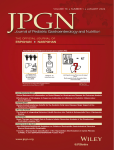Acid Secretion and Response to Pentagastrin or Omeprazole in Human Fetal Stomach Xenografts
ABSTRACT
Background:
The dual capacity of stomach tissue to secrete acid and to respond to secretagogues is indicative of the terminal stages of gastric functional maturation. In this study 6-to 10-week-old human fetal stomachs xenografted into nude mice were used to study parietal cells' functional maturation.
Methods:
Thirty-four transplants were microsurgically grafted either inside a pouch created on the nude peritoneum (n = 15) or on the host stomach and esophagus (n = 19). The mucosa of transplanted tissues was analyzed by immunohistochemical techniques to detect gastric cells. Gastric cell secretions were collected before and after pentagastrin or omeprazole treatment.
Results:
Parietal, G, and D cells were detected immunohistochemically only after 1 month of grafting. All xenografts actively secreted acid after 1 or 2 months' transplantation at each graft site. Acid secretion was significantly stimulated by intraperitoneally injected pentagastrin (mean pH ± SD, 3.2 ± 0.7 vs. 2.0 ± 0.5;n = 10, P = 0.005) and was dramatically inhibited by intragastrically administered omeprazole (2.3 ± 0.6 vs. 6.5 ± 0.7;n = 15, P = 0.0007) after 5 hours.
Conclusion:
Stomach xenografts were able to develop normally. Parietal cells were physiologically mature with functional proton pumps and active gastrin receptors, as demonstrated after omeprazole and pentagastrin treatment, respectively. Because stomach xenografts matured very rapidly, it is possible that a stomach xenograft model can be used for further studies on the functional maturation of human gastric epithelial cells, as well as the factors that influence this maturation in humans.




